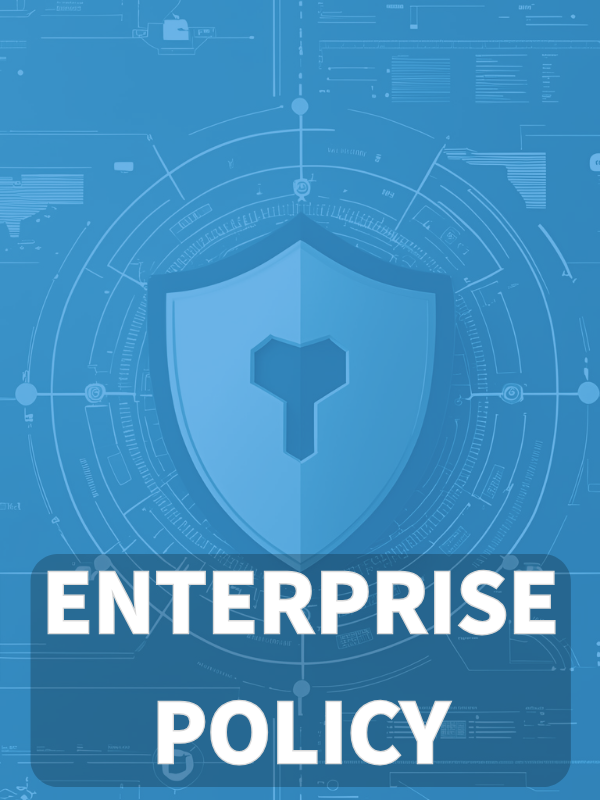Overview
This Change Management Policy sets structured controls over all system and process changes, requiring thorough review, approval, documentation, risk assessment, and auditability to ensure secure, stable, and compliant IT operations.
Structured Change Controls
All changes are reviewed, approved, and tracked to minimize risk and ensure system stability.
Comprehensive Risk Assessments
Risk-driven evaluation ensures data integrity, business continuity, and compliance during changes.
Clear Roles & Governance
Defined responsibilities for CAB, IT, audit, and stakeholders enforce accountability at every stage.
Compliance Alignment
Fully aligned with ISO/IEC 27001:2022, NIST, GDPR, DORA, NIS2, and COBIT 2019 frameworks.
Read Full Overview
Policy Diagram

Click diagram to view full size
What's Inside
Scope and Rules of Engagement
Change Classification and Approval
Testing, Validation, and Rollback Planning
Risk Assessment and Exception Handling
Post-Implementation Review
Third-Party and Vendor Compliance
Framework Compliance
🛡️ Supported Standards & Frameworks
This product is aligned with the following compliance frameworks, with detailed clause and control mappings.
| Framework | Covered Clauses / Controls |
|---|---|
| ISO/IEC 27001:2022 | |
| ISO/IEC 27002:2022 | |
| NIST SP 800-53 Rev.5 | |
| EU GDPR |
32(1)(b–d)25Recital 78
|
| EU NIS2 | |
| EU DORA | |
| COBIT 2019 |
Related Policies
Governance Roles And Responsibilities Policy
Defines approval authorities and segregation of duties relevant to change authorization and oversight.
Audit Compliance Monitoring Policy
Governs the validation and audit review of change management records and violations.
Information Security Policy
Establishes the requirement for formal security controls and process-level accountability, including change management governance.
Access Control Policy
Ensures that access permissions for change implementers and reviewers follow least privilege principles.
Risk Management Policy
Ensures that all changes are subject to appropriate risk evaluation and mitigation strategies.
About Clarysec Policies - Change Management Policy
Effective security governance requires more than just words; it demands clarity, accountability, and a structure that scales with your organization. Generic templates often fail, creating ambiguity with long paragraphs and undefined roles. This policy is engineered to be the operational backbone of your security program. We assign responsibilities to the specific roles found in a modern enterprise, including the CISO, IT Security, and relevant committees, ensuring clear accountability. Every requirement is a uniquely numbered clause (e.g., 5.1.1, 5.1.2). This atomic structure makes the policy easy to implement, audit against specific controls, and safely customize without affecting document integrity, transforming it from a static document into a dynamic, actionable framework.
Integrated Change Management System
Requires all requests, approvals, and supporting documents to be recorded centrally, enabling reliable audit trails and workflow automation.
Dedicated Emergency Change Protocols
Expedited approvals, rapid documentation, and mandatory post-change reviews reduce downtime and control risk during urgent incidents.
Automated Tooling Integration
Supports CI/CD, backups, and version control integration to streamline change execution and rollback validation.
Frequently Asked Questions
Built for Leaders, By Leaders
This policy was authored by a security leader with 25+ years of experience deploying and auditing ISMS frameworks for global enterprises. It's designed not just to be a document, but a defensible framework that stands up to auditor scrutiny.
